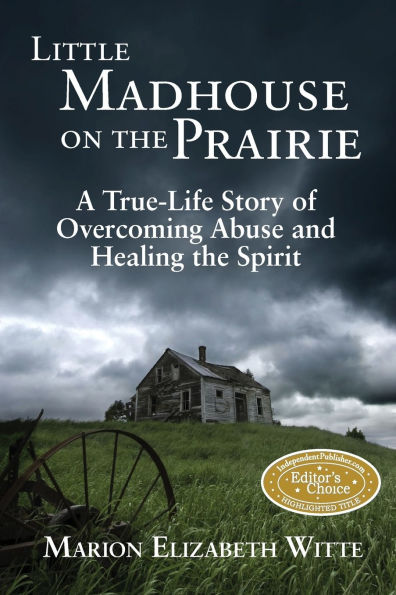Little Madhouse on the Prairie: A True-Life Story of Overcoming Abuse and Healing the Spirit
Marion Witte was raised in a little house on the prairie, but her childhood was nothing like the idyllic version of childhood made famous by Laura Ingalls. Witte's story has its roots in immigrant grandparents who struggle to make a living on the harsh Midwestern plains. Unbelievable hardship, alcoholism, abuse and abandonment were the norm during her youth. Witte endured punishments that had devastating emotional effects. She was often locked in a dark, dirty cellar with the rats and mice, terrifed and too little to turn on the light bulb that hung high above her. As Witte retells the circumstances of her youth, it becomes clear that this book is much more than a compelling story of childhood mistreatment. The crux of her story maintains that once abuse stops, the psychological damage lingers. Even as Witte graduated from college, became a CPA, and had her own family, she knew that there were wounds to be healed. Witte takes the reader on the journey she pursued to heal from the past, and the pitfalls and successes of that process. Her honest and compassionate portrayal draws the reader into an analysis of negative adult behaviors and why we may behave in an emotionally immature manner. This is a book that connects the dots between our childhood experiences, our current adult behavior and the way we parent.
1111243861
Little Madhouse on the Prairie: A True-Life Story of Overcoming Abuse and Healing the Spirit
Marion Witte was raised in a little house on the prairie, but her childhood was nothing like the idyllic version of childhood made famous by Laura Ingalls. Witte's story has its roots in immigrant grandparents who struggle to make a living on the harsh Midwestern plains. Unbelievable hardship, alcoholism, abuse and abandonment were the norm during her youth. Witte endured punishments that had devastating emotional effects. She was often locked in a dark, dirty cellar with the rats and mice, terrifed and too little to turn on the light bulb that hung high above her. As Witte retells the circumstances of her youth, it becomes clear that this book is much more than a compelling story of childhood mistreatment. The crux of her story maintains that once abuse stops, the psychological damage lingers. Even as Witte graduated from college, became a CPA, and had her own family, she knew that there were wounds to be healed. Witte takes the reader on the journey she pursued to heal from the past, and the pitfalls and successes of that process. Her honest and compassionate portrayal draws the reader into an analysis of negative adult behaviors and why we may behave in an emotionally immature manner. This is a book that connects the dots between our childhood experiences, our current adult behavior and the way we parent.
17.95
In Stock
5
1

Little Madhouse on the Prairie: A True-Life Story of Overcoming Abuse and Healing the Spirit
240
Little Madhouse on the Prairie: A True-Life Story of Overcoming Abuse and Healing the Spirit
240
17.95
In Stock

Product Details
| ISBN-13: | 9780982225431 |
|---|---|
| Publisher: | Wise Owl Publishing, Inc. |
| Publication date: | 02/01/2011 |
| Pages: | 240 |
| Product dimensions: | 6.00(w) x 9.00(h) x 0.55(d) |
About the Author
What People are Saying About This
From the B&N Reads Blog
